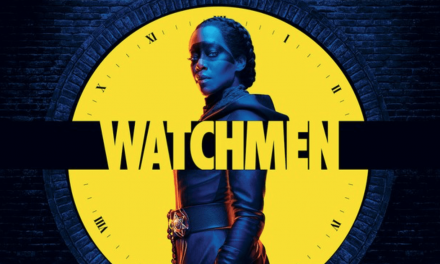Counting down
In October or November, every TV and radio channel in Denmark announces its special version of the yearly Christmas calendar.
Looking back on highlights from previous years, social media, magazines and newspapers cover the event, bringing clips, quotations, pictures and evaluations. In this way, all media contribute to the annual celebration starting on December 1, counting down to the climax, which in Denmark takes place on Christmas Eve.
https://ipaper.ipapercms.dk/DSB/udogse/2020/ud-se-december-2020/?page=172
This magic evening constitutes the redemption of the great expectations built up by the Christmas calendars, among other preparations in December. The ideas that Christmas is the celebration of hearts, that generations can dance together around the Christmas tree, and that light has finally conquered darkness are core values of this tradition, celebrated in many TV Christmas calendars targeting the whole family. Christmas calendars for grown-ups take another stance, showing the month of December and Christmas as a time of transgression, drinking yule and grossly joking with traditions.
Julefeber (Christmas Fever) and Juleønsket (Christmas Wishes)
Public interest usually focuses on the Christmas calendars of DR and TV 2, the two main TV broadcasters. Normally competitive, DR and TV 2 have developed a tradition of producing a new Christmas calendar in turns. Being DR’s turn this year, Julefeber (created by Mette Eike Neerlin and the director Natasha Arthy) represents the flagship of Christmas calendars in 2020, while TV 2’s Juleønsket (created by Ina Bruhn and directed by Carsten Myllerup) is a repeat from 2015.

Fig. 2: Juleønsket, launched by TV 2 as “A magic reunion with popular family Christmas calendar on TV 2”, October 6, 2020. https://omtv2.tv2.dk/nyheder/2020/10/juleoensket-magisk-gensyn-med-populaer-familiejulekalender-paa-tv-2/
Strikingly often, however, repeats appear to be as popular as original productions, sometimes even surpassing them, probably because, in the case of reruns, you know what you are going to get. On December 1, Julefeber attracted 938,000 viewers on broadcast television, and Juleønsket almost the same – 900,000 viewers (Live and Viewing On Same Day As Live). During the week November 30 until December 6, 2020, both calendars figured on the top 10 list, though with declining numbers – a result that may be counterbalanced by updating with streaming.
In many ways, Julefeber and Juleønsket are typical of prevailing tendencies for the main bulk of productions during the first decades of the 21st Century. It started with the first and, until now, only calendar with a Christian perspective, Jesus og Josefine (TV 2 2003), which launched the illusion of parallel worlds, switching from a contemporary Danish context to Bethlehem nearly 2000 years before. The typical elements of the fantasy genre – besides parallel worlds the quest structure, so easy to fit into the Christmas calendar genre – continued with other titles. Among the most innovative are Jul i Valhal (Yule in Valhalla, TV 2 2005), Mikkel og guldkortet (Mikkel and the Golden Card, TV 2 2008), Tidsrejsen (The Time Travel, DR 2014) and Den anden verden (The other World, DR 2016) (Agger 2020, Kallehauge & Overgaard 2018).

Fig. 3: Drinking Yule in Jul i Valhal – from a fansite “For alle os der elsker tv-julekalendere”, Facebook, December 20, 2017. https://facebook.com/289252017847269/posts/1336804979758629/
and

Fig. 4: Sara (Caroline Vedel), breaking through the portal to a fairy tale world, inspired by the Grimm brothers.
They are all family calendars, designed primarily for an audience of big children and near-teens (8-13), their parents and grandparents. Julefeber as well as Juleønsket take place within families and, in both cases, the situation of the family presents a threat to a genuine Christmas Eve. In Julefeber, a magic sensibility to music makes life difficult for Bjørn (Silas Cornelius Van), and in Juleønsket, Julie (Olivia Hillingsø) obtains access to angels and demons in a fierce fight between light and darkness.
The sound of Christmas
Hardly any calendar is produced without a compelling score. Julefeber and Juleønsket are no exceptions. Written and performed by Nanna Øland Fabricius (whose stage name is Oh Land), the title song of Julefeber invites its audience to dance in the exquisite location of The Royal Theatre in the centre of Copenhagen, both on the stage and on the roof with a magnificent view of the towers of Copenhagen. The choice of the title Julefeber is apposite, indicating the feverish atmosphere of December. This atmosphere is compellingly conveyed by the title song.
In Juleønsket, the title song, written and performed by the popular singer Rasmus Seebach, is just as appropriately called “Lille store verden” (Little big world). Following TV 2’s obligation to represent regions outside of Copenhagen, the location was found in Nyborg on the island of Funen, a site where the Great Belt Bridge becomes a symbol of how the landscape connects to the sea and the sky. The song mirrors this connection, bridging the gap between the little and the big world.
A diverse genre
A repeated and heated discussion in the press every year concerns the high-profile productions of the two main producers, DR and TV 2. Do they convey the much-longed-for celebration of hearts or ‘hygge’-atmosphere of Christmas to a satisfactory degree? Or are they cheerless and uncanny (‘uhyggelig’ in Danish, or in German, as Sigmund Freud (2003) has taught us, ‘unheimlich’)? This discussion may be best understood as a yearly ritual of lining up positions for and against innovation with all its risks. Taking into account the number and the diversity of the Christmas calendars, there is no other explanation. There is a Christmas calendar for every target group and taste, and besides, it is possible to use the streaming services to obtain access to whichever calendar you wish for your family, your very young children, older children or for your own satisfaction. Just a few examples.
Broadcast TV offers a variety of reruns – and a few innovations. Besides Julefeber, RAMASJANG, DR’s children’s channel, screens Nissebanden (The Elf Gang, DR 1984) for the 5th time. Here you will find all the ‘hygge’ you need!

Fig. 5: The members of Nissebanden. Photo: Valdemar Vedel, DR. https://juleweb.dk/julekalendere/nissebanden/
Another rerun on the same channel is Sebastians jul (Sebastian’s Christmas) from 2010 about life on a farm, targeting small children. In the morning the small children can watch yet another rerun, Ramasjetternes jul (The Christmas of the ramashettes [a word referring to RAMASJANG, the name of the channel], 2017).
The special genre of Christmas calendars for grown-ups is usually designed as an exorbitant parody of all the ‘hygge’-traditions accompanying Christmas, bringing instant comic relief to its audience. Grown-ups may watch a new advent calendar in four parts, Jul med Trines mor (Christmas with Trine’s Mother), built on the satirical radio programme Rytteriet (The Cavalry). This calendar focuses on the relationship between mothers and daughters, pointing out a mutual tendency not to listen.
TV 2 reruns Alletiders jul (The Best Christmas Ever), the iconic calendar from 1994, which tells the story of the origin of all Christmas traditions from pagan times and the Vikings up to modern Christmas (Agger 2013). The background being that Pyrus, the trainee elf in The National Archives, by accident happened to destroy all evidence of Christmas traditions. Accordingly, the task of the keepers of public records among the elves as well as the humans, is to reconstruct remembrance. Eventually, they succeed – just before December 24. More ‘hygge’!
For grown-ups, TV 2 screens the classical The julekalender from 1991 (Agger 2005). As seen from the title, it blends Danish and English, and the viewers keep laughing and quoting funny sentences. The third season of Natholdets julekalender (The Christmas Calender of the Night Team) figures on TV 2 Zulu. Where Rytteriet primarily targets a female audience, Natholdets julekalender rather appeals to a male audience interested in trying 24 different kinds of beer which are offered at Christmas. This is quite in line with the Vikings’ habit of ‘drinking Yule’. When December started, the collection of beers corresponding to the progress of the calendar was out of stock.
The streaming services offer their special versions, for instance Grethes jul (Grethe’s Christmas) on TV 2 Play. On YouTube you will find CENTRUM 2 | made by Jonas Risvig – an alternative Christmas calendar for teenagers. Inspired by the SKAM-tradition, it aims to fit Christmas traditions into a universe filled with teenage thoughts and teenage behavior, far from any magic. For the series without the Christmas perspective, see Katrine Bouschinger Christensen and Eva Novrup Redvall’s CSTonline contribution.
From 7 o’clock in the morning to late in the evening, it is possible to watch a Christmas calendar on TV. However, other media take their fair share of the collective output of Christmas calendars.
Different channels on the radio contribute with specialized Christmas calendars, in accordance with their respective profiles. P 2 (Radio Denmark), for instance, offers a series of 24 female composers as a daily gift during December, opposing the conventional assumption that there are next to none.
On P 1 (Radio Denmark), Poul Nesgaard, former leader of the Danish Film School, is in charge of a calendar called Verdens bedste julekalender (The Best Christmas Calendar in the World). This is a pun referring to Jul og grønne skove (Christmas and Green Woods), an infamous TV Christmas calendar from 1980, usually considered the worst Christmas calendar ever. However, if it did not appeal to all children, it was fascinating to the kind of children who were able to cherish its anarchic and playful structure.
Further, as a form, the Christmas calendar appears in all kinds of everyday activities during December, for instance as an invitation for exercises to keep fit.

Fig. 7: An invitation from staff members at a university department to perform gymnastic exercises every day during December.
Prospects for the future
In my childhood in the 1950s, Christmas calendars were printed cardboard calendars. They might be small or big, plain or sprinkled with tinsel. Usually, we would meticulously close the doors and keep the calendars for reuse the next year. Additionally, I remember the printed calendar ‘Pixie-Per’ in our regional newspaper consisting of a drawing and a diminutive story each day during December.
Today, the tradition has developed and invaded different areas to an almost exhausting degree. No doubt, we have not witnessed the end. The immense popularity of the genre in Denmark and the other Nordic countries raises the question: Why has it only been exported to a very limited degree?
Focusing on TV calendars, the genre was invented in Sweden I 1960. During the 1960’s, it quickly spread to the other Nordic countries. In Denmark, the first calendar was screened in 1962. According to public opinion, domestic productions are preferred, but during the last decades, there has been a certain exchange of calendars across the Nordic countries. For instance, in 2020 DR additionally screens two Swedish Christmas calendars, and the Norwegian Snøfall (Snowfall, NRK 2016) figured as DR’s main calendar in 2017. Presently Snøfall is adapted on more theatres in Denmark. Besides, The Julekalender has seen an adaptation in Norway as well as Finland. As part of increased cooperation between the Nordic countries, Julefeber was produced by DR in cooperation with NRK, YLE and RUV (public service stations in Norway, Finland and Iceland, respectively). Increased exchange and cooperation between the Nordic countries is a realistic option in the future.
A limited export of Christmas calendars to countries outside the Nordic region has also taken place. For instance, Jesus og Josefine was sold to TV stations in Germany, Italy, The Netherlands, Slovenia and even to the Christian SAT 7, targeting countries in the Middle East and North Africa. Perhaps it is easier to sell the product with a Christian flavor?
As for the rest of the world, the Christmas film seems to satisfy the basic demand for Christmas genres (Conelly 2000). The Nordic countries have to patiently await the magic moment when other countries join them in exploring and celebrating all the possibilities and wonders inherent in the Christmas calendar genre.
Gunhild Agger is professor emerita in Media History at the University of Aalborg. She has published widely on history of television drama, media and genres, national and transnational film. https://vbn.aau.dk/da/persons/gunhild-moltesen-agger
References:
Agger, Gunhild. 2020. Det grænseløse tv-drama: Danskhed og transnationalitet. Frederiksberg: Samfundslitteratur.
Agger, Gunhild. 2013. “Danish Christmas Calendars: folklore, myth and cultural history”. Journal of Scandinavian Cinema, 3 (3): 267-280. https://doi.org/10.1386/jsca.3.3.267_1.
Agger, Gunhild. 2005. Dansk tv-drama – arvesølv og underholdning. Frederiksberg: Samfundslitteratur.
Conelly, Mark (ed.). 2000. Christmas at the Movies. Images of Christmas in American, British and European Cinema. London: Tauris.
Freud, Sigmund. 2003. [1919]. The Uncanny. London: Penguin Classics.
Kallehauge, Matilde & Overgaard, Pernille Dahl. 2018. Dansk tv-julekalender til tiden – fra dukker til drama. https://kosmorama.org/person/matilde-kallehauge-og-pernille-dahl-overgaard.








Thank you for this Gunhild – this is a notion of broadcasting that I’ve never come across before; as such, I found it very enjoyable and engaging to read about something very fresh and different of this nature.
Hoping that you and yours are safe and well and looking forward to the holidays.
Glædelig Jul!
Andrew